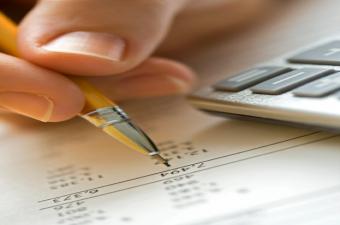The nation's economy grew at a seasonally adjusted annual rate of 2.4 percent in the first quarter, slightly slower than originally reported, the ""Bureau of Economic Analysis"":http://www.bea.gov/newsreleases/national/gdp/2013/pdf/gdp1q13_2nd.pdf (BEA) said Thursday.
[IMAGE]Economists surveyed by Bloomberg had expected the revised gross domestic product (GDP) to grow at a 2.5 percent pace, unchanged from the first estimate issued a month ago.
At the same time, BEA said corporate profits in the first quarter were $1.97 trillion, down almost $44 billion from the fourth quarter. The last time corporate profits showed a quarter-over-quarter decline was in the first quarter of 2012. Corporate profits are considered a key indicator of employment trends.
Profits fell for both financial and non-financial corporations. The quarterly drop in profits at financial corporations was fourth in the last five quarters.
The GDP estimates were based on data updated from the initial report issued a month ago. For that report, BEA said only two months of data were available for several key data sources, and it assumed an increase in nondurable manufacturing inventories, an increase in merchant wholesale and retail inventories, an increase in exports of goods (excluding gold) and a decrease in imports of goods, excluding gold.
The positive movement in GDP meant the economy met and overcame two significant challenges: the end of the two-year payroll tax holiday as of January 1--which cost most wage earners $1,000 for the entire year--and as of March 1, the beginning of the federal budget sequester, which reduced federal spending.
Government spending in the revised report was down about $5 billion from the initial report. Compared with the fourth quarter, total government spending is down $31 billion.
The reduction in take-home pay didn't stop consumers. Personal consumption spending rose 3.4 percent in the first quarter compared with 3.2 percent in the original report and a 1.8 percent boost in the fourth quarter. [COLUMN_BREAK]
Government spending was a drag on growth, subtracting 0.97 percent from GDP as the effects of the sequester began to kick in. That impact could be deeper in the second quarter, which will--absent any budget deal in Washington--reflect three months of sequester cuts, not just one.
By the numbers, GDP rose a net $80.8 billion in the first quarter to just under $13.75 trillion. In the first GDP report a month ago, the quarterly increase was pegged at $84.7 billion.
GDP itself, the broadest measure of the economy, is the sum of consumer spending, investment and government spending, less net exports.
Indeed, consumer spending accounted for the entire increase for the quarter--up $81.8 billion--as the combination of the drop in government spending and ""net exports"" offset consumer activity.
Investment--including inventories and residential and non-residential structures--added another $42.1 billion. However, total investment, which had been estimated at $1.991 trillion in the first report, was revised downward to $1.977 trillion, with reduced estimates for inventory investment. That reduction suggests a slowdown in consumer activity in coming quarters.
Residential fixed investment was essentially unchanged from the initial report at $397.3 billion, up $11.1 billion from the fourth quarter and $45 billion from the first quarter a year ago.
BEA issues three GDP reports for each report. Thursday's report was the second ""advance"" report. The final first quarter report will be issued on June 26, just four days before the second quarter ends.
For the fourth quarter, BEA's advance GDP report showed the economy had contracted 0.1 percent, but the final report showed the economy actually grew, albeit by just 0.4 percent which was the weakest growth rate since the first quarter of 2011. The 2.5 percent growth rate for the first quarter, while better than the fourth quarter, is slower than the 3.1 percent growth rate in the third quarter of 2012. In the first quarter last year, the economy grew 2.0 percent.
The personal consumption price index--an alternate measure of inflation watched closely by the Federal Reserve--showed a 1.0 percent inflation rate in the last year compared with 1.6 percent in the fourth quarter. The core inflation rate--excluding more volatile food and energy prices--was 1.3 percent in the first quarter from 1.0 percent in the fourth.
The inflation measures take on added significance as the Federal Reserve said it would look to two measures--the unemployment rate and the inflation rate--to determine when to raise interest rates.
_Hear Mark Lieberman next Friday on P.O.T.U.S. radio, Sirius-XM 124, at 6:20 a.m. Eastern._

 theMReport.com Your trusted source for mortgage banking news
theMReport.com Your trusted source for mortgage banking news









